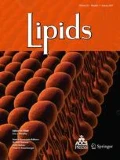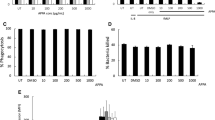Abstract
Neutrophils play a major role in inflammation by releasing large amounts of reactive oxygen species (ROS) produced by NADPH oxidase (NOX) and myeloperoxidase (MPO). This ROS overproduction is mediated by phosphorylation of the NOX subunits in an uncontrolled manner. Therefore, targeting neutrophil subunits would represent a promising strategy to moderate NOX activity, lower ROS, and other inflammatory agents, such as cytokines and leukotrienes, produced by neutrophils. For this purpose, we investigated the effects of protectin DX (PDX)—a docosahexaenoic acid di-hydroxylated product which inhibits blood platelet aggregation—on neutrophil activation in vitro. We found that PDX decreases ROS production, inhibits NOX activation and MPO release from neutrophils. We also confirm, that PDX is an anti-aggregatory and anti-inflammatory agent by inhibiting both cyclooxygenase-1 and -2 (COX-1 and COX-2, E.C. 1.14.99.1) as well as COX-2 in lipopolysaccharides-treated human neutrophils. However, PDX has no effect on the 5-lipoxygenase pathway that produces the chemotactic agent leukotriene B4 (LTB4). Taken together, our results suggest that PDX could be a protective agent against neutrophil invasion in chronic inflammatory diseases.





Similar content being viewed by others
Abbreviations
- ARA:
-
Arachidonic acid
- BSTFA:
-
N,O-Bis(trimethylsilyl)-trifluoroacetamide
- CLA:
-
Conjugated linoleic acid
- ClnA:
-
Conjugated linolenic acid
- COX:
-
Cyclooxygenase
- DHA:
-
Docosahexaenoic acid
- ECL:
-
Enhanced chemiluminescence
- EPA:
-
Eicosapentaenoic acid
- 5-HETE:
-
5-hydroxy-6E,8Z,11Z,14Z-eicosatetraenoic acid
- fMLF:
-
Formyl-methionyl-leucylphenylalanine
- GM-CSF:
-
Granulocyte macrophage-colony stimulating factor
- HBSS:
-
Hank’s balanced salt solution
- HOCl:
-
Hypochloric acid
- HRP:
-
Horseradish peroxidase
- IBD:
-
Inflammatory bowel disease
- IL:
-
Interleukin
- LA:
-
Linoleic acid
- LPS:
-
Lipopolysaccharides
- LTB4 :
-
Leukotriene B4
- MPO:
-
Myeloperoxidase
- NOX:
-
NADPH oxidase
- PAF:
-
Platelet-activating factor
- PAGE:
-
Polyacrylamide gel electrophoresis
- PBS:
-
Phosphate-buffered saline
- PDX:
-
Protectin DX
- PG:
-
Prostaglandin
- Phox:
-
Phagocyte oxidase
- PMA:
-
Phorbol myristate acetate
- PMN:
-
Polymorphonuclear neutrophil
- PUFA:
-
Polyunsaturated fatty acids
- ROS:
-
Reactive oxygen species
- RP-HPLC:
-
Reverse phase high performance liquid chromatography
- sLOX:
-
Soybean lipoxygenase
- TLC:
-
Thin-layer chromatography
- TMB:
-
Tetramethyl benzidine
- TNBS:
-
Trinitrobenzene sulfonic acid
- TNF-α:
-
Tumor necrosis factor-α
References
Mullenix PS, Andersen CA, Starnes BW (2005) Atherosclerosis as inflammation. Ann Vasc Surg 19:130–138
Fiocchi C (1998) Inflammatory bowel disease: etiology and pathogenesis. Gastroenterology 115:182–205
Podolsky DK (2002) Inflammatory bowel disease. N Engl J Med 347:417–429
Mantovani A, Allavena P, Sica A, Balkwill F (2008) Cancer-related inflammation. Nature 454:436–444
Pearson TA, Mensah GA, Alexander RW, Anderson JL, Cannon RO 3rd, Criqui M, Fadl YY, Fortmann SP, Hong Y, Myers GL, Rifai N, Smith SC Jr, Taubert K, Tracy RP, Vinicor F (2003) Markers of inflammation and cardiovascular disease: application to clinical and public health practice: a statement for healthcare professionals from the centers for disease control and prevention and the American Heart Association. Circulation 107:499–511
Esposito K, Giugliano D (2004) The metabolic syndrome and inflammation: association or causation? Nutr Metab Cardiovasc Dis 14:228–232
Choy EH, Panayi GS (2001) Cytokine pathways and joint inflammation in rheumatoid arthritis. N Engl J Med 344:907–916
Nathan C (2002) Points of control in inflammation. Nature 420:846–852
Santana Reyes C, García-Muñoz F, Reyes D, González G, Dominguez C, Domenech E (2003) Role of cytokines (interleukin-1beta, 6, 8, tumour necrosis factor-alpha, and soluble receptor of interleukin-2) and C-reactive protein in the diagnosis of neonatal sepsis. Acta Paediatr 92:221–227
Bayne LJ, Beatty GL, Jhala N, Clark CE, Rhim AD, Stanger BZ, Vonderheide RH (2012) Tumor-derived granulocyte-macrophage colony-stimulating factor regulates myeloid inflammation and T cell immunity in pancreatic cancer. Cancer Cell 21:822–835
Ortega-Gómez A, Perretti M, Soehnlein O (2013) Resolution of inflammation: an integrated view. EMBO Mol Med 5:661–674
Menshchikova E, Zenkov N, Tkachev V, Potapova O, Cherdantseva L, Shkurupiy V (2013) Oxidative stress and free-radical oxidation in BCG granulomatosis development. Oxid Med Cell Longev 2013:452546
Klebanoff SJ (2005) Myeloperoxidase: friend and foe. J Leukoc Biol 77:598–625
Roos D, van Bruggen R, Meischl C (2003) Oxidative killing of microbes by neutrophils. Microbes Infect 5:1307–1315
Babior BM (1984) Oxidants from phagocytes: agents of defense and destruction. Blood 64:959–966
Babior BM, Lambeth JD, Nauseef W (2002) The neutrophil NADPH oxidase. Arch Biochem Biophys 397:342–344
Sheppard FR, Kelher MR, Moore EE, McLaughlin NJ, Banerjee A, Silliman CC (2005) Structural organization of the neutrophil NADPH oxidase: phosphorylation and translocation during priming and activation. J Leukoc Biol 78:1025–1042
Whiting CV, Bland PW, Tarlton JF (2005) Dietary n-3 polyunsaturated fatty acids reduce disease and colonic proinflammatory cytokines in a mouse model of colitis. Inflamm Bowel Dis 11:340–349
Serhan CN (2006) Resolvins and protectins: novel lipid mediators in anti-inflammation and resolution. Scand J Food Nutr 50:68–78
Kohli P, Levy BD (2009) Resolvins and protectins: mediating solutions to inflammation. Br J Pharmacol 158:960–971
Song HJ, Sneddon AA, Barker PA, Bestwick C, Choe SN, McClinton S, Grant I, Rotondo D, Heys SD, Wahle KW (2004) Conjugated linoleic acid inhibits proliferation and modulates protein kinase C isoforms in human prostate cancer cells. Nutr Cancer 49:100–108
Flowers M, Thompson PA (2009) t10c12 Conjugated linoleic acid suppresses HER2 protein and enhances apoptosis in SKBr 3 breast cancer cells: possible role of COX2. PLoS One 4:e5342. doi:10.1371/journalpone0005342
Boussetta T, Raad H, Lettéron P, Gougerot-Pocidalo MA, Marie JC, Driss F, El-Benna J (2009) Punicic acid a conjugated linolenic acid inhibits TNFα-induced neutrophil hyperactivation and protects from experimental colon inflammation in rats. PLoS One 4:e6458. doi:10.1371/journalpone0006458
Chen P, Véricel E, Lagarde M, Guichardant M (2011) Poxytrins, a class of oxygenated products from polyunsaturated fatty acids, potently inhibit blood platelet aggregation. FASEB J 25:382–388
Chen P, Fenet B, Michaud S, Tomczyk N, Véricel E, Lagarde M, Guichardant M (2009) Full characterization of PDX, a neuroprotectin/protectin D1 isomer, which inhibits blood platelet aggregation. FEBS Lett 583:3478–3484
Serhan CN, Gotlinger K, Hong S, Lu Y, Siegelman J, Baer T, Yang R, Colgan SP, Petasis NA (2006) Anti-inflammatory actions of neuroprotectin D1/protectin D1 and its natural stereoisomers: assignments of dihydroxy-containing docosatrienes. J Immunol 176:1848–1859
Morita M, Kuba K, Ichikawa A, Nakayama M, Katahira J, Iwamoto R, Watanebe T, Sakabe S, Daidoji T, Nakamura S, Kadowaki A, Ohto T, Nakanishi H, Taguchi R, Nakaya T, Murakami M, Yoneda Y, Arai H, Kawaoka Y, Penninger JM, Arita M, Imai Y (2013) The lipid mediator protectin D1 inhibits influenza virus replication and improves severe influenza. Cell 153:112–125
Dang PM, Stensballe A, Boussetta T, Raad H, Dewas C, Kroviarski Y, Hayem G, Jensen ON, Gougerot-Pocidalo MA, El-Benna J (2006) A specific p47phox -serine phosphorylated by convergent MAPKs mediates neutrophil NADPH oxidase priming at inflammatory sites. J Clin Invest 116:2033–2043
Laemmli UK (1970) Cleavage of structural proteins during the assembly of the head of bacteriophage T4. Nature 227:680–685
Watanabe T, Narumiya S, Shimizu T, Hayaishi O (1982) Characterization of the biosynthetic pathway of prostaglandin D2 in human platelet-rich plasma. J Biol Chem 257:14847–14853
Klebanoff SJ (1999) Myeloperoxidase. Proc Assoc Am Physicians 111:383–389
Winterbourn CC, Kettle AJ (2000) Biomarkers of myeloperoxidase-derived hypochlorous acid. Free Radic Biol Med 29:403–409
Stamp LK, Khalilova I, Tarr JM, Senthilmohan R, Turner R, Haigh RC, Winyard PG, Kettle AJ (2012) Myeloperoxidase and oxidative stress in rheumatoid arthritis. Rheumatology (Oxford) 51:1796–1803
Papadakis KA, Targan SR (2000) Tumor necrosis factor: biology and therapeutic inhibitors. Gastroenterology 119:1148–1157
Dewas C, Dang PM, Gougerot-Pocidalo MA, El-Benna J (2003) TNF-alpha induces phosphorylation of p47 (phox) in human neutrophils: partial phosphorylation of p47phox is a common event of priming of human neutrophils by TNF-alpha and granulocyte-macrophage colony-stimulating factor. J Immunol 171:4392–4398
El-Benna J, Dang PM, Gougerot-Pocidalo MA (2008) Priming of the neutrophil NADPH oxidase activation: role of p47phox phosphorylation and NOX2 mobilization to the plasma membrane. Semin Immunopathol 30:279–289
Larmonier CB, Midura-Kiela MT, Ramalingam R, Laubitz D, Janikashvili N, Larmonier N, Ghishan FK, Kiela PR (2011) Modulation of neutrophil motility by curcumin: implications for inflammatory bowel disease. Inflamm Bowel Dis 17:503–515
Zock PL, Katan MB (1998) Linoleic acid intake and cancer risk: a review and meta-analysis. Am J Clin Nutr 68:142–153
Hatanaka E, Levada-Pires AC, Pithon-Curi TC, Curi R (2006) Systematic study on ROS production induced by oleic, linoleic, and gamma-linolenic acids in human and rat neutrophils. Free Radic Biol Med 41:1124–113239
Martins de Lima-Salgado T, Coccuzzo Sampaio S, Cury-Boaventura MF, Curi R (2011) Modulatory effect of fatty acids on fungicidal activity, respiratory burst and TNF-α and IL-6 production in J774 murine macrophages. Br J Nutr 105:1173–1179
Wanten GJ, Janssen FP, Naber AH (2002) Saturated triglycerides and fatty acids activate neutrophils depending on carbon chain-length. Eur J Clin Invest 32:285–289
Lewis RA, Austen KF, Soberman RJ (1990) Leukotrienes and other products of the 5-lipoxygenase pathway. Biochemistry and relation to pathobiology in human diseases. N Engl J Med 323:645–655
Sakai M, Kakutani S, Horikawa C, Tokuda H, Kawashima H, Shibata H, Okubo H, Sasaki S (2012) Arachidonic acid and cancer risk: a systematic review of observational studies. BMC Cancer 12:606
Harbige LS (2003) Fatty acids, the immune response, and autoimmunity: a question of n-6 essentiality and the balance between n-6 and n-3. Lipids 38:323–341
Siriwardhana N, Kalupahana NS, Moustaid-Moussa N (2012) Health benefits of n-3 polyunsaturated fatty acids: eicosapentaenoic acid and docosahexaenoic acid. Adv Food Nutr Res 65:211–222
Hardy SJ, Robinson BS, Poulos A, Harvey DP, Ferrante A, Murray AW (1994) The neutrophil respiratory burst. Responses to fatty acids, N-formylmethionylleucylphenylalanine and phorbol ester suggest divergent signalling mechanisms. Eur J Biochem 198:801–806
Paschoal VA, Vinolo MA, Crisma AR, Magdalon J, Curi R (2013) Eicosapentaenoic (EPA) and docosahexaenoic (DHA) acid differentially modulate rat neutrophil function in vitro. Lipids 48:93–103
Acknowledgments
This study was supported by Inserm and the French Ministry of Education and Research. Miao Liu was received a grant from the China Scholarship Council.
Author information
Authors and Affiliations
Corresponding author
Additional information
M. Liu, T. Boussetta, K. Makni-Maalej contributed equally to this work.
About this article
Cite this article
Liu, M., Boussetta, T., Makni-Maalej, K. et al. Protectin DX, a Double Lipoxygenase Product of DHA, Inhibits Both ROS Production in Human Neutrophils and Cyclooxygenase Activities. Lipids 49, 49–57 (2014). https://doi.org/10.1007/s11745-013-3863-6
Received:
Accepted:
Published:
Issue Date:
DOI: https://doi.org/10.1007/s11745-013-3863-6




